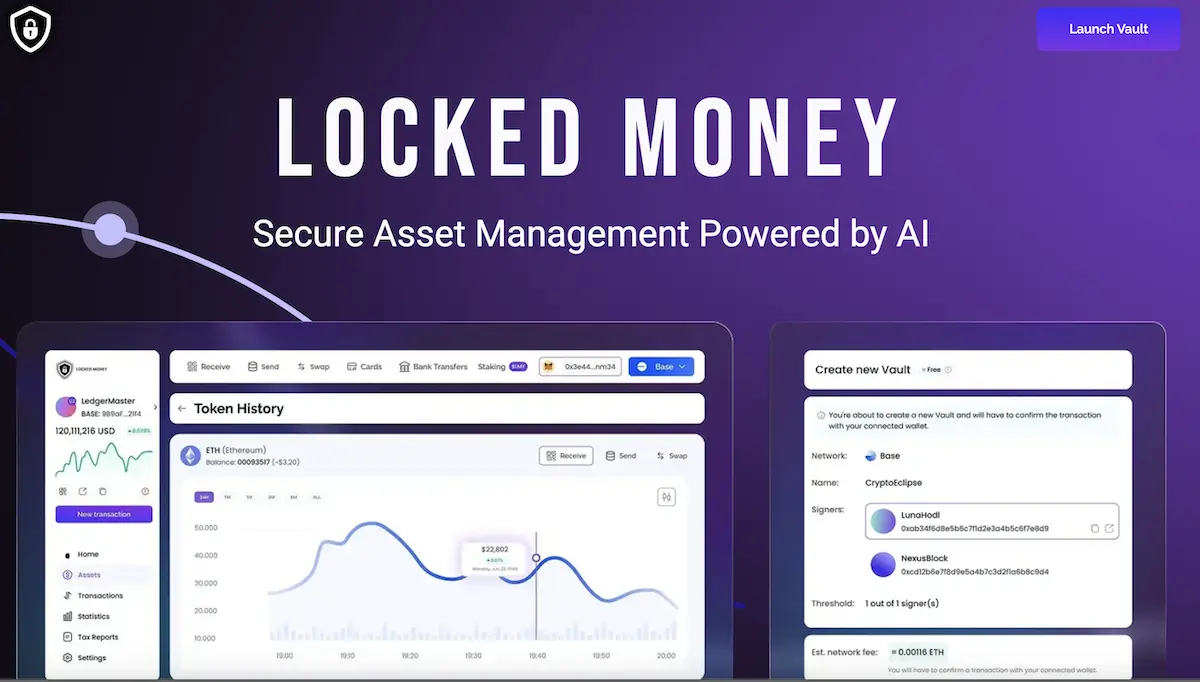Is Web3 a simple concept for you? I highly doubt it. You may have received a DM from me recently (or will do soon) asking your opinion on what topics you’d like me to cover in our blog. What business marketing questions to you have? What Web3 issues do you wanted to understand better?
Maurizio Alfieri threw out three solid ideas, all of which I will cover soon. In fact, today’s subject came from Maurizio: breaking down Web3 without the tech-babble.
I’m sure many of you feel like I did when I first heard about Web3 back in 2018. WTF is Web3? I put my study cap on and fell into a YouTube rabbithole on blockchain, cryptocurrencies, NFTs, etc. It was fascinating. The time had come for us to take back control. Control of what, you might ask? Your data, your money, and your online identity.
The trouble is, words like “blockchain” and “decentralized” sound like sci-fi jargon, and who wants to leave their comfort zone? Especially when you’ve heard horror stories like FTX crashing and burning. Scams happen, and it’s scary. But what if I told you Web3 isn’t about dodgy schemes? It’s about building a fairer internet.
Let’s take a ‘Web3 for dummies’ look at what it is and how it will improve the internet and our lives for decades to come.
Why Web3 Feels Intimidating (And Why It Shouldn’t)

Change is hard. We’re used to Web2 – Instagram, Facebook, Amazon – where companies call the shots. You’re the product, not the owner. Web3 flips that script: you own your stuff. But yeah, the learning curve is steep, and bad actors (like FTX) give the whole space a bad rap.
Here’s the good news:
- Scams aren’t the norm: Most crypto projects are legit. Just like you wouldn’t quit online banking because one bank messed up, don’t write off Web3 for a few bad apples.
- Jargon is optional: You don’t need a PhD. Start with baby steps – like downloading a crypto wallet – and ignore the complex terms until you’re ready.
- Comfort zones are overrated: Staying in Web2 means trusting corporations with your data. Web3 hands you the keys.
What Exactly is Web3?
Think of the internet’s evolution like this:
- Web1 (1990s): A read-only library. Static pages, zero interaction.
- Web2 (2000s-today): A social mall. You “borrow” space (posting on Instagram), but Zuckerberg owns the building.
- Web3 (now): Your digital house. You own the deed, the furniture, and the rules.
How it works:
- Blockchain: A public notebook 📒 that everyone can see but no one can cheat. Every transaction (like sending crypto) gets recorded permanently.
- Tokens: Digital keys proving you own something. Crypto (Bitcoin) is like cash; NFTs are like digital collectibles (your rare Pokémon card).
- Smart contracts: Robot-handshakes 🤖. Example: “Pay the artist $10 every time their song plays on Spotify.” No middleman needed.
Web3 Tools Made Simple
Here’s how regular people use them, no tech degree required:
- Cryptocurrencies
- What it is: Digital money (Bitcoin, Ethereum).
- Why it’s cool: Send cash to your friend in Peru in 10 minutes – no bank fees, no paperwork.
- Real example: Use Nexo to buy $10 of Bitcoin. It’s like Venmo, but global.
- NFTs (Non-Fungible Tokens)
- What it is: Digital ownership certificates for art, music, or game items.
- Why it’s cool: Artists sell directly to fans. No gallery takes 50% of their profits.
- Real example: A musician drops 100 NFT albums on OpenSea. Fans buy them, and the artist earns royalties every time they resell.
- DAOs (Decentralized Autonomous Organizations)
- What it is: A group chat with a shared bank account. Members vote on decisions.
- Why it’s cool: No CEO calls the shots. You and 100 strangers fund a startup together.
- Real example: Friends With Benefits DAO – pay for membership, vote on events, and split profits.
- DeFi (Decentralized Finance)
- What it is: Robot-run banks. Earn interest without Wells Fargo.
- Why it’s cool: Get a loan in 5 minutes using your crypto as collateral.
- Real example: Uniswap lets you swap tokens like trading cards – no sign-up, no KYC.
- Staking
- What it is: Think of staking like putting your crypto in a digital savings account.
- How it works: You lock up your crypto (like Ethereum or Solana) to help run the network. In return, you get rewarded with more crypto – kind of like earning interest at a bank.
- Why it’s cool: Your money works for you, and you support the network at the same time. You’ll see your balance grow over time, just for helping keep things running smoothly.
- Real example: I have Ethereum (ETH) and Locked Money (LMY) staked in my Locked Money vault. The reason I stake my digital assets here is because they run giveaways. This means that you can win prizes just for staking on the Locked Money platform. Right now they’re giving away a share of $5555, just for staking $222, which will more than double in value during the 12-month staking period.
You can learn more about this giveaway in this blog and in my YouTube video.

Staking is a big reason why people are excited about DeFi. It’s a way to earn passive income without needing to trade or take big risks. Just remember, there are always risks in crypto, so start small and do your research before locking up your coins.
Why Web3 Beats Web2
| Feature | Web2 | Web3 |
|---|---|---|
| Ownership | Instagram owns your photos | You own your digital art (NFTs) |
| Control | Twitter can ban you | Rules are code (no bias) |
| Money Flow | TikTok profits from your videos | You earn crypto directly |
| Transparency | Hidden ad algorithms | Open-source, verifiable code |
| Security | Data breaches (Facebook leaks) | Your wallet = fortress 🔒 |
3 Huge Upgrades for You:
- Get paid for your attention: Apps like Brave Browser reward you in crypto for watching ads.
- True digital ownership: Buy an NFT concert ticket → resell it → the artist still earns royalties.
- Censorship resistance: Post freely on Mastodon (decentralized Twitter).
Getting Started: Your First 4 Steps
- Grab a crypto wallet
- Try MetaMask (Chrome extension). It’s your digital backpack 🎒 for tokens.
- Pro tip: Never share your 12-word password. Scammers lurk in DMs!
- Explore beginner apps
- OpenSea: Browse NFTs. No purchase needed – just window-shop.
- Uniswap: Swap tokens like trading cards.
- Join a DAO
- Search “beginner DAOs” on Discord. Bankless DAO is newbie-friendly.
- Start stupid small
- Buy $10 of Ethereum. Send $1 to a friend. Mess up? You’re out $1, not $1,000.
Busting Web3 Fears
- “It’s all scams!”: Stick to trusted platforms (Coinbase, Nexo, OpenSea). Avoid “too good to be true” offers.
- “I’ll lose everything!”: Use hardware wallets (like Ledger) for big holdings.
- “Tech is too complex!”: You didn’t learn TikTok overnight. Web3’s the same.
The Bottom Line

Web3 isn’t about replacing the internet – it’s about upgrading it to put you in charge. Forget the FTX drama. This is your chance to own your digital life. Start with a $10 experiment. Curious? That’s all it takes.
“Web3 turns users from renters into owners.”
– Like owning your first bike instead of borrowing one.
Remember:
- 🔐 Security first: Never rush. Double-check URLs (fake MetaMask sites exist).
- 🐢 Slow and steady: Web3 isn’t a sprint. It’s a casual bike ride.
So, what’s your take on Web3? Does the idea of owning your digital assets and having more control over your online life sound exciting, or do you still feel cautious about all the new tech and headlines? Have you tried out any Web3 tools, or maybe you already own a bit of crypto or an NFT? Or does it all still feel a bit overwhelming?
Are you curious to dip your toes in, or do you have questions or worries holding you back? Maybe you’ve seen stories about scams and want to know how to stay safe. Or perhaps you’re already using Web3 and have tips for others just getting started.
Share your thoughts in the comments – whether you’re excited, skeptical, or somewhere in between. What’s your biggest question or hope for Web3? Your perspective could help someone else who’s on the fence.
_________________________________________________________________
Want to know how to increase customers and sales for your business?
Tap here to chat to me and I’ll show you how we make it happen.
If you’ve enjoyed reading today’s blog, please share our blog link below.
Do you have a blog on business and marketing that you’d like to share on influxjuice.com/blog? Contact me at rob@influxjuice.com.
Want to know how we can guarantee a mighty boost to your traffic, rank, reputation and authority in you niche?
Click here to access our 3-Step Marketing Playbook – ‘SEM/GEM Guide’.

